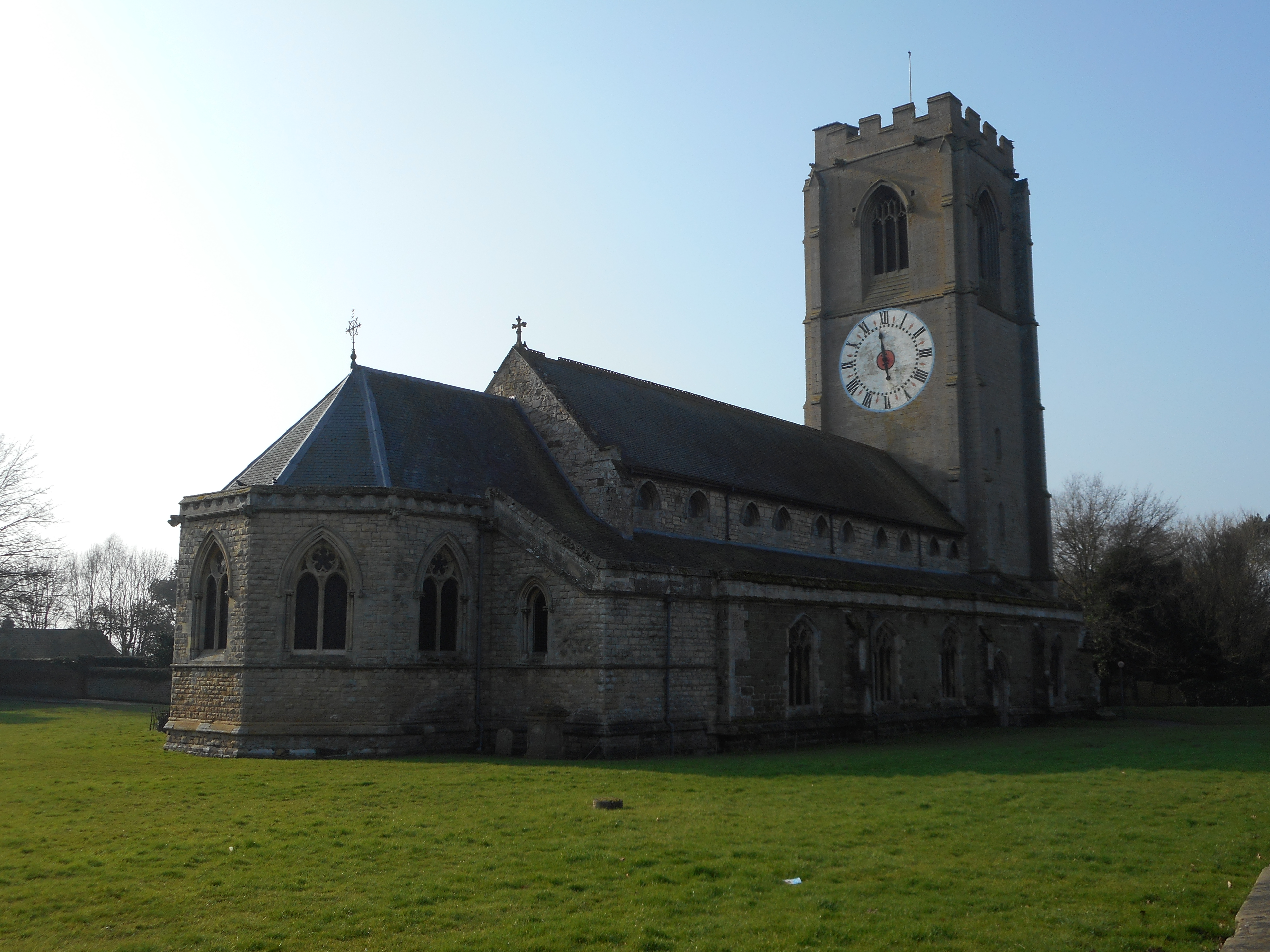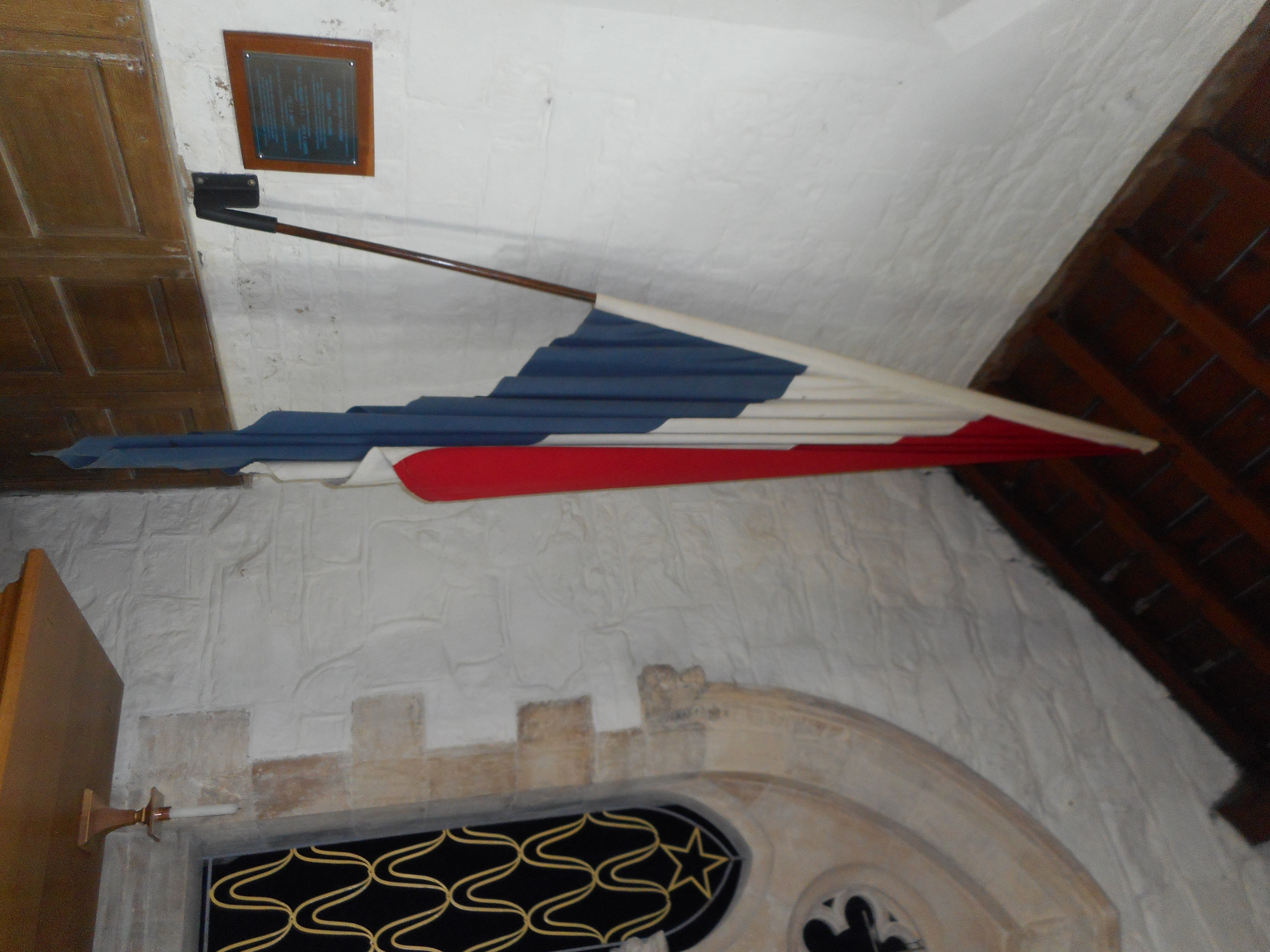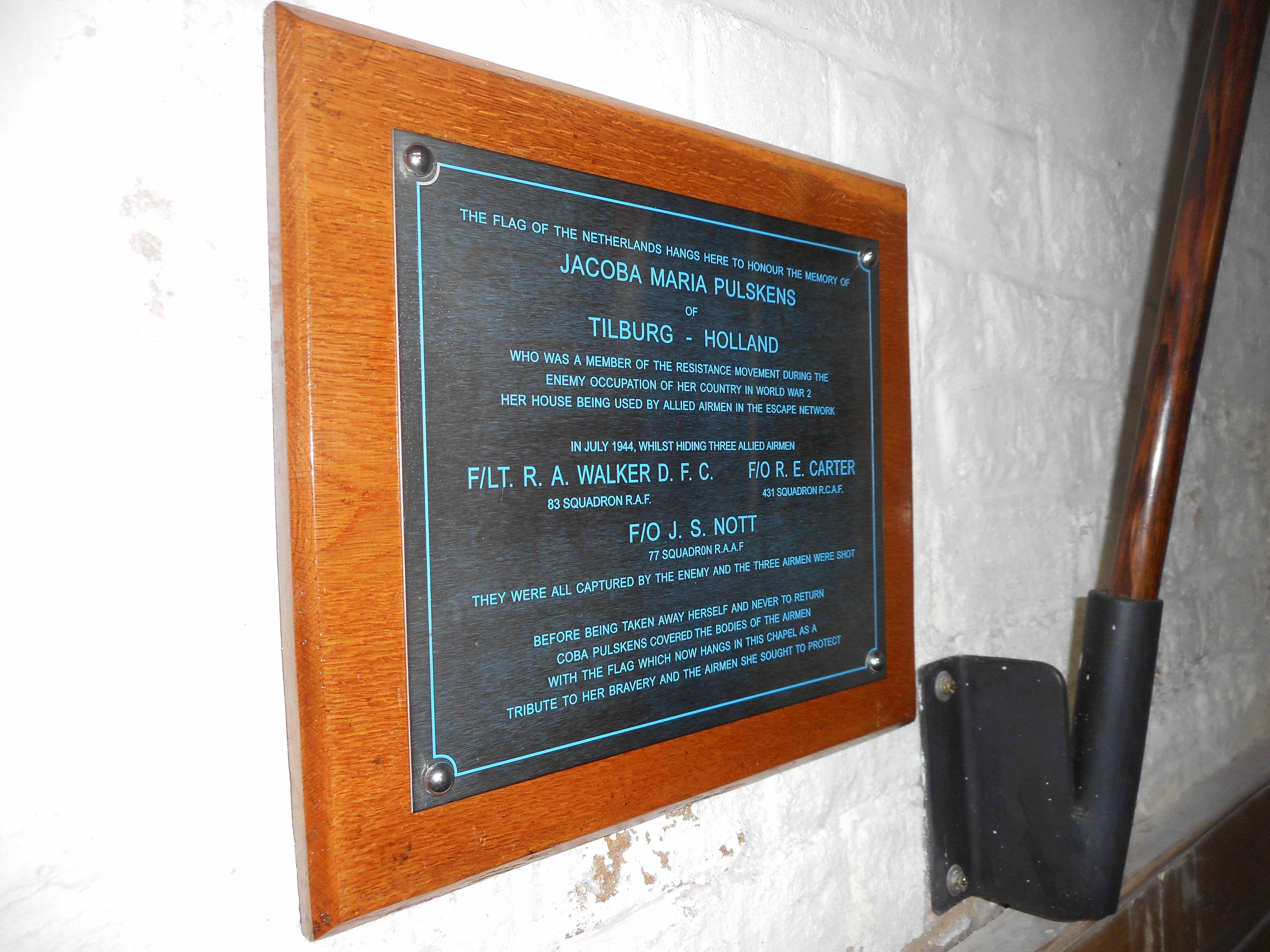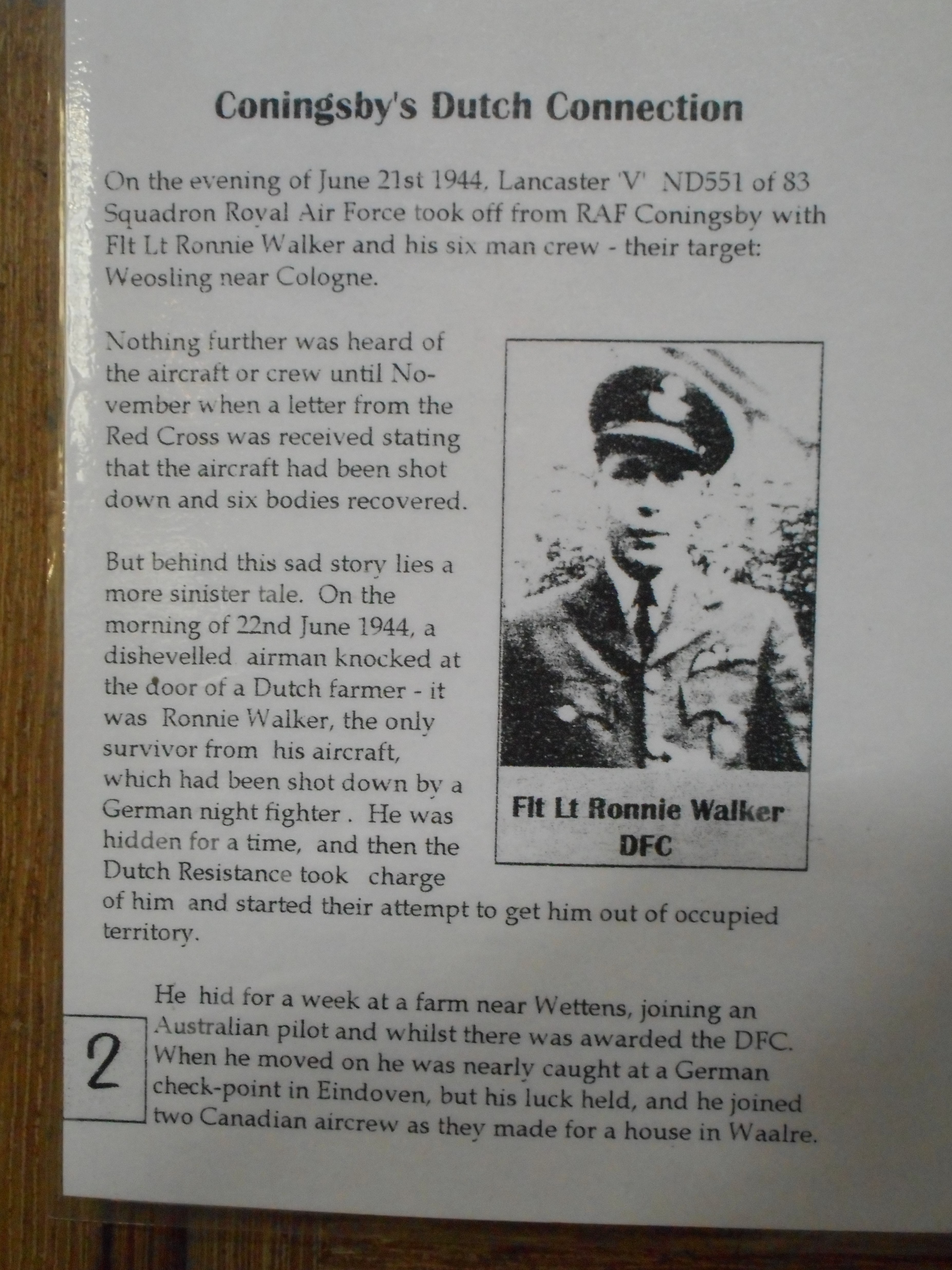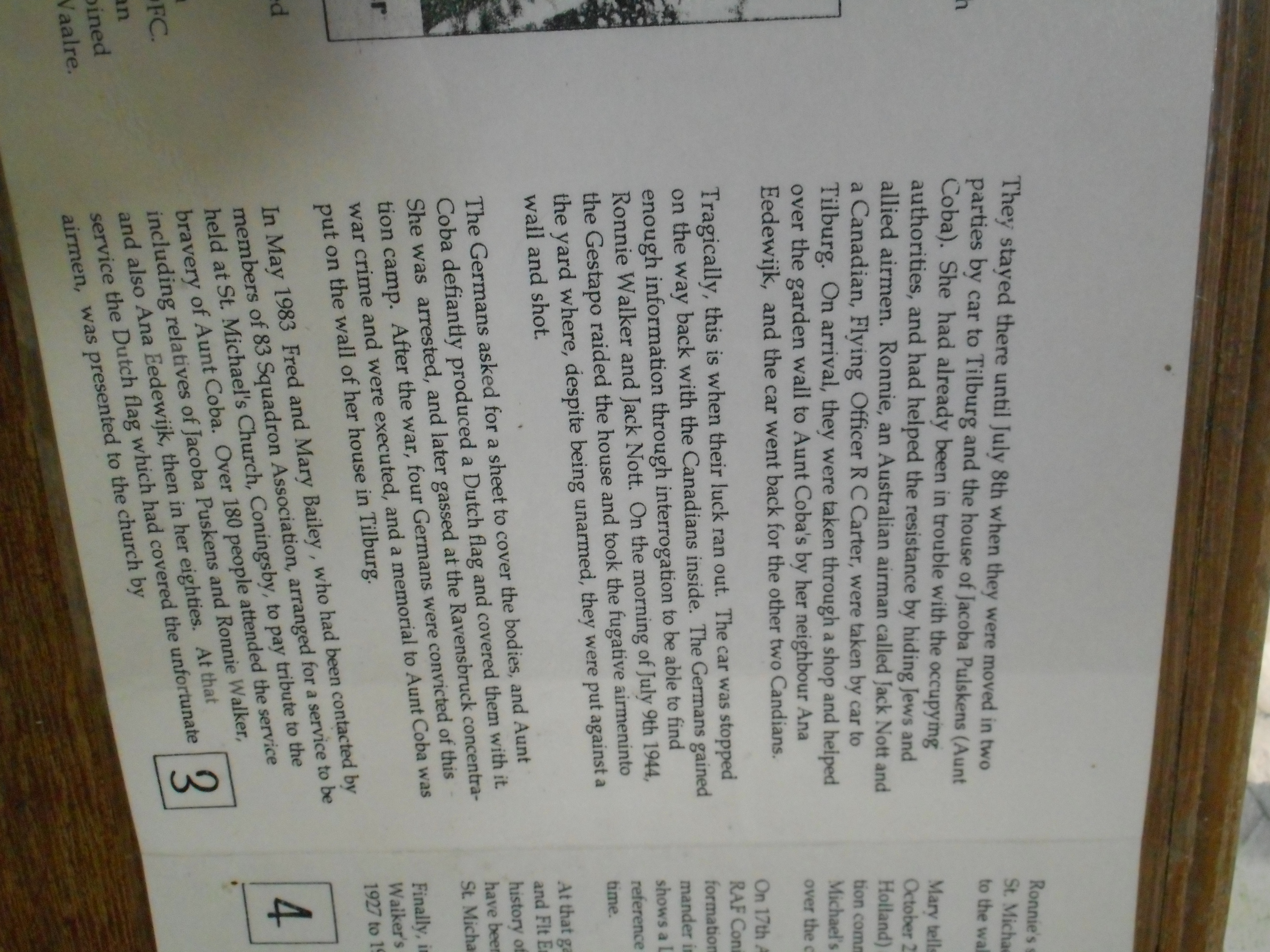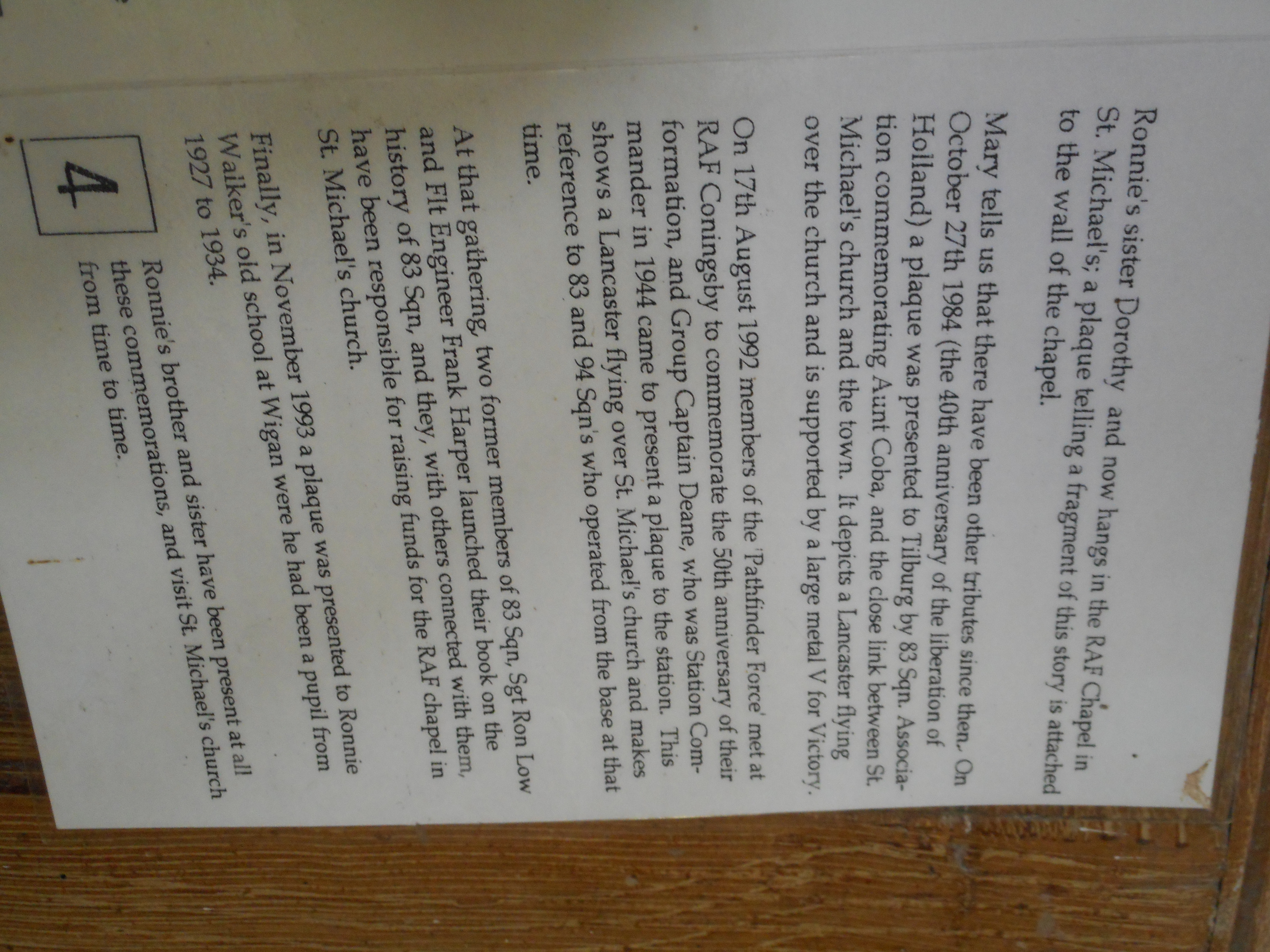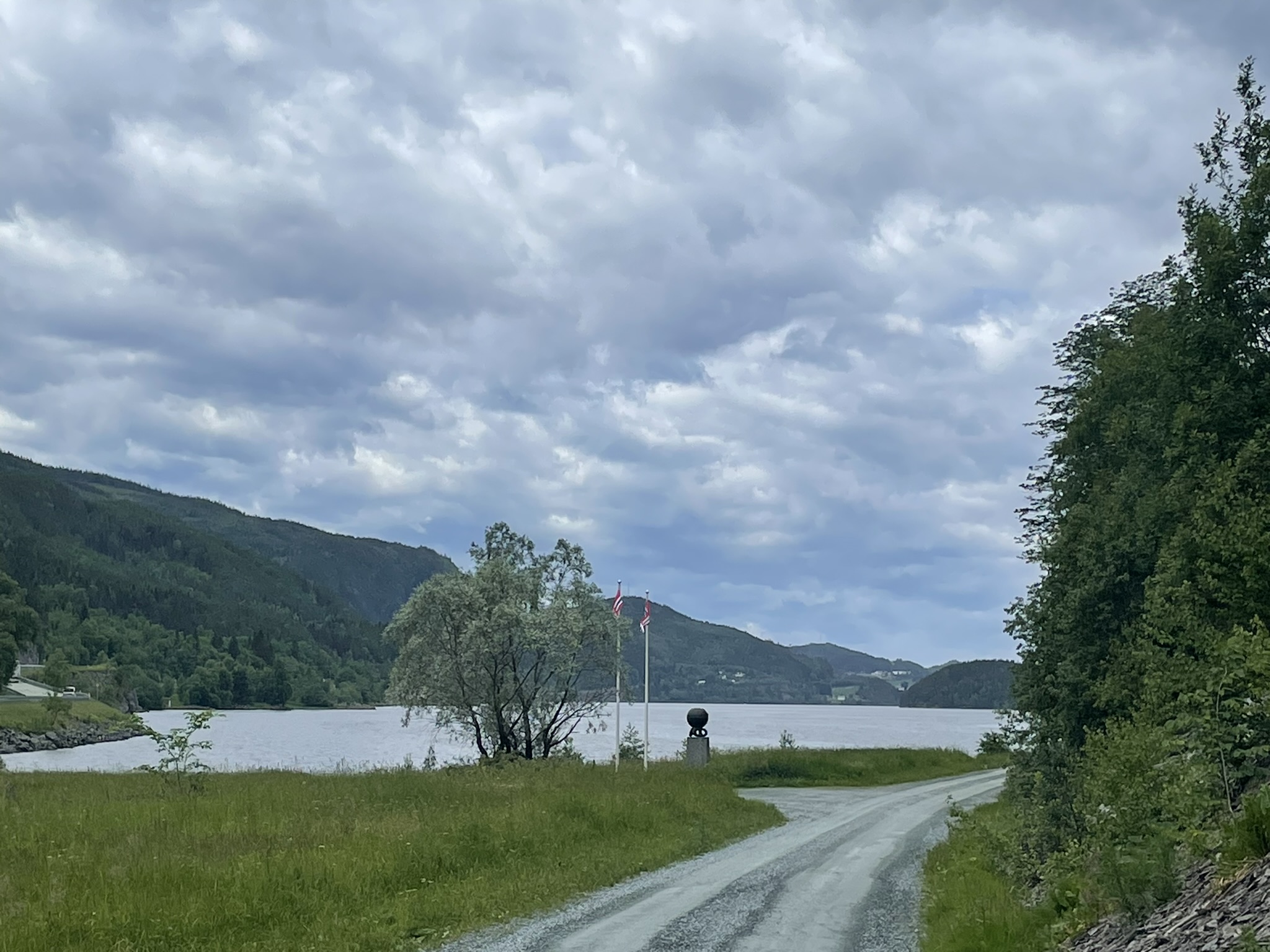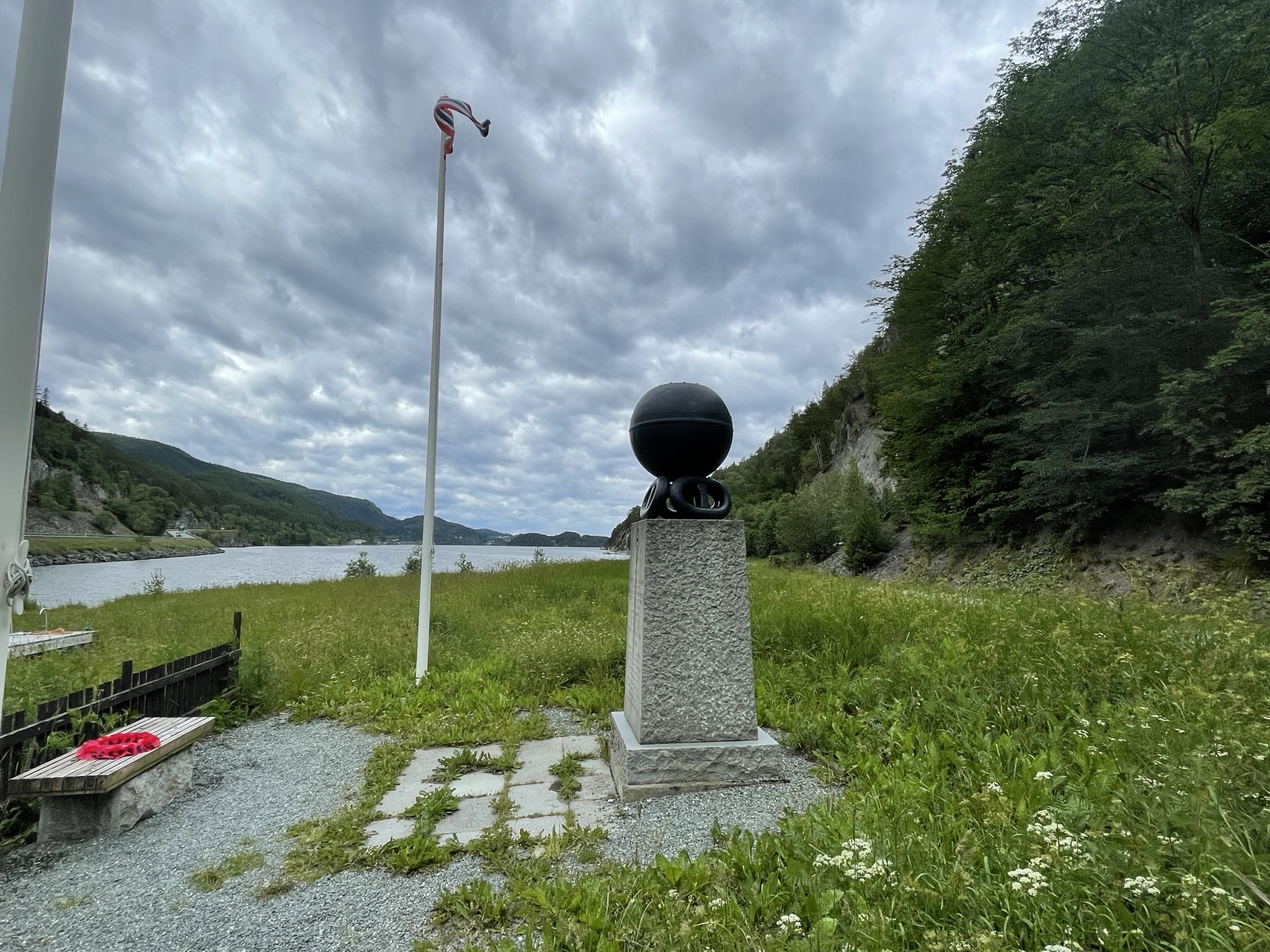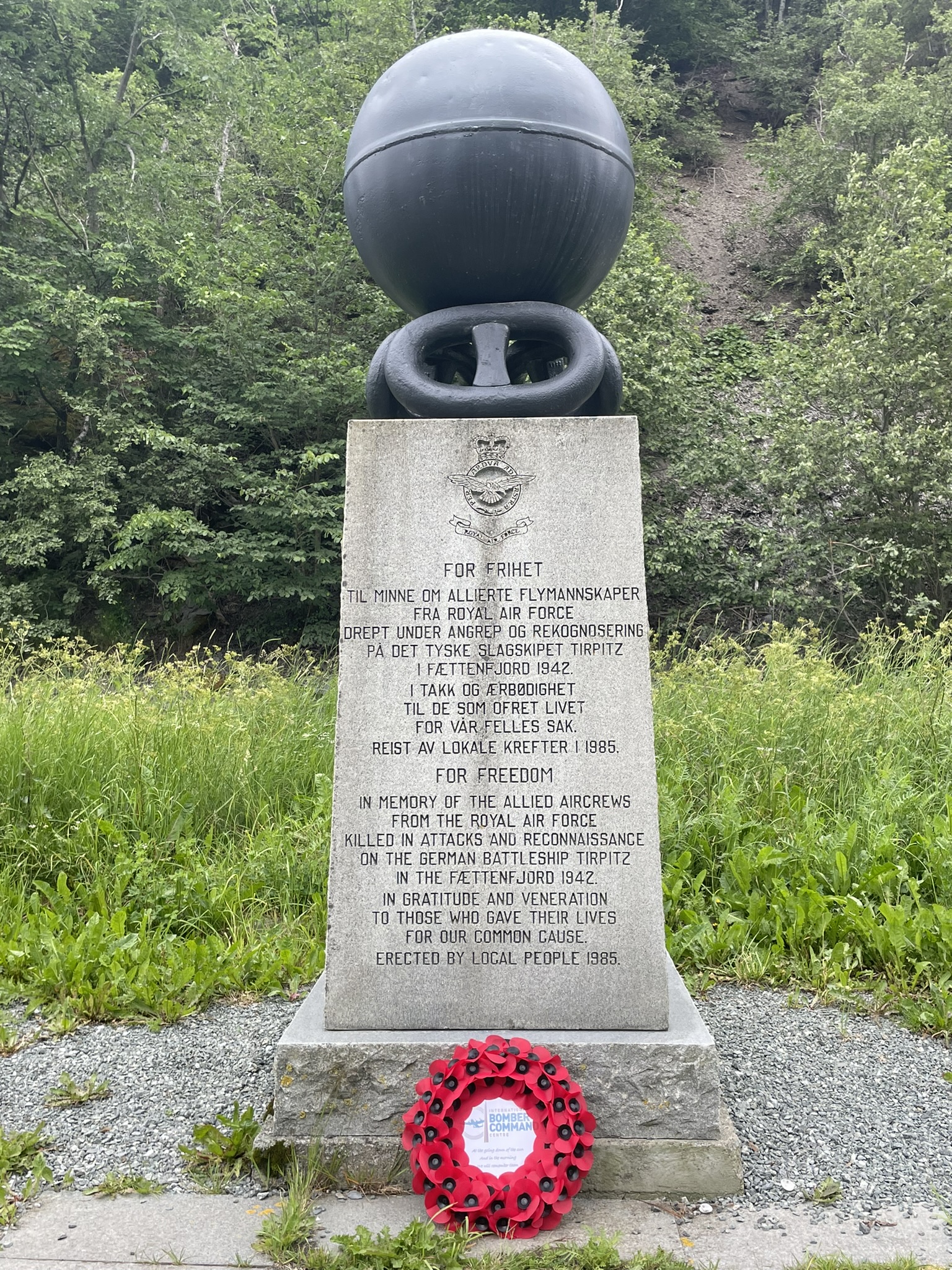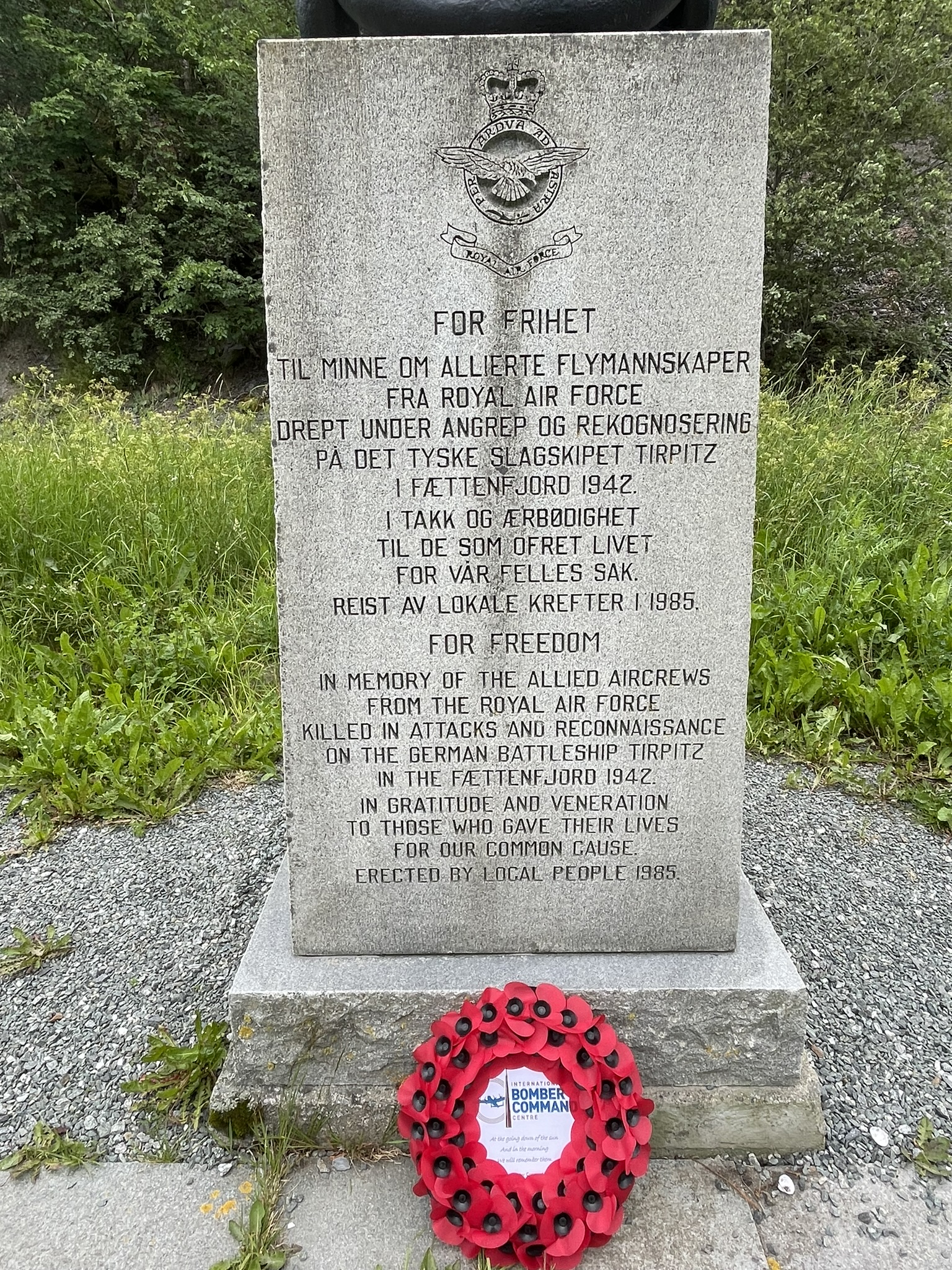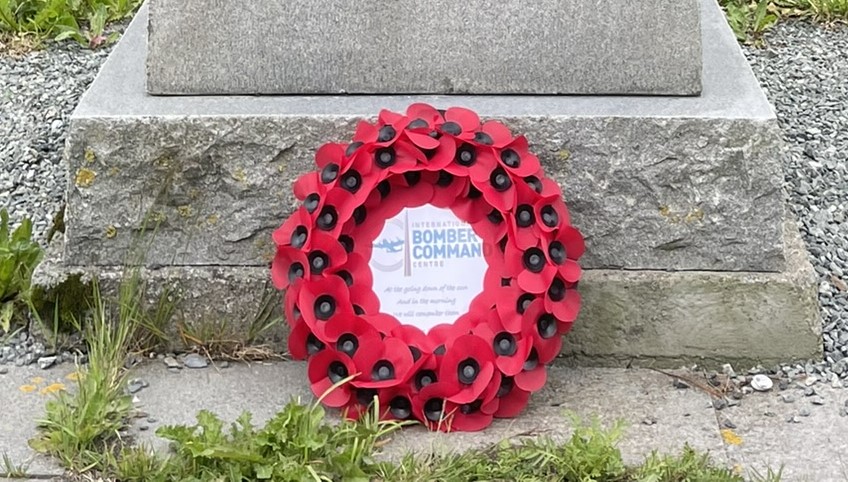Golding, Richard Charles Sydney
Personal Information
| Rank | Sgt |
| Forename(s) | Richard Charles Sydney |
| Surname | Golding |
| Gender | M |
| Age | 27 |
| Date of Death | 04-07-1943 |
| Next of Kin | Son of Richard Charles Ernest Golding and Harriet Elizabeth Golding (née Smith) or Southwark. |
Aircraft Information
| Aircraft | Avro Lancaster III |
| Serial Number | ED917 |
| Markings | OF-U |
Memorial Information
| Burial/Memorial Country | United Kingdom |
| Burial/Memorial Place | Runnymede Memorial |
| Grave Reference | Panel 150. |
| Epitaph |
IBCC Memorial Information
| Phase | 2 |
| Panel Number | 170 |
Enlistment Information
| Service Number | 517511 |
| Service | Royal Air Force |
| Group | 8 |
| Squadron | 97 (Straits Settlements) |
| Squadron Motto | Achieve your aim |
| Trade | Flight Engineer |
| Country of Origin | United Kingdom |
Other Memorials
| Location | Church of the Holy Spirit, RAF Coningsby, Coningsby, Lincolnshire |
| Country | United Kingdom |
| Memorial Type | Stained Glass Window |
| Memorial Text | A stained glass window remembering 97 Sqn in the Church of the Holy Spirit, RAF Coningsby |
| Location | Roadside location (off E6), Fættenfjord, near Åsenfjord, Trøndelag Fylke |
| Country | Norway |
| Memorial Type | Inscribed memorial stone atopped with inert aerial sea mine and Tirpitz anchor chain link |
| Memorial Text |
For Frihet Til minne om Allierte Flymannskaper fra RAF drept under angrep pa det tyske slagskipet Tirpitz i Fættenfjord 1942
Translation "For freedom In memory of the Allied Aircrews from the RAF who died in attacks on the German Battleship Tirpitz in the Fættenfjord 1942 " |
Miscellaneous Information
| Born 10 April 1915 in Greenwich |
Commonwealth War Graves Commission
The National Archives
| Record of Events (Operational Record Book) AIR 27/767/14 |
| Summary of Events (Operational Record Book) AIR 27/767/13 |
Fellow Servicemen
Please note that this list gives all the losses aboard the quoted aircraft and occasionally these may have occurred on an earlier date when the aircraft was not itself lost. Please check the dates of death carefully.
Last Operation Information
| Start Date | 03-07-1943 |
| End Date | 04-07-1943 |
| Takeoff Station | Bourn |
| Day/Night Raid | Night (2% moon) |
| Operation | Cologne- region on the east bank of the Rhine where most of the industry was located. 653 aircraft, 30 losses (4.6%). Accurate ground marking by Oboe equipped Mosquitoes leading to another very significant blow to this Ruhr city. 20 industrial and 2200 homes completely destroyed and 588 people killed. A further 72000 people were bombed out. This was the first time the 'Wild Boar' technique had been used, in which the flak height was limited to allow night-fighters to fly over the main force and pick out aircraft in silhouette against the fires below. |
| Reason for Loss | Shot down by a night-fighter flown either by Offw. Otto Hofer or Hptm. Ewald Janssen. Crashed into the south of the city. Lancaster DS662 was shot down around the same time and crashed in the same vicinity. |
